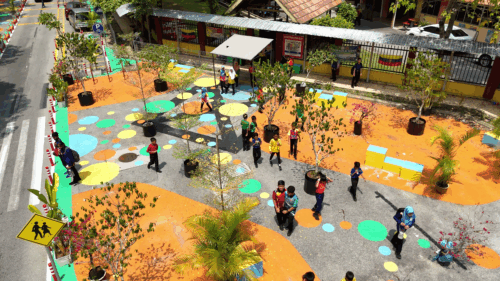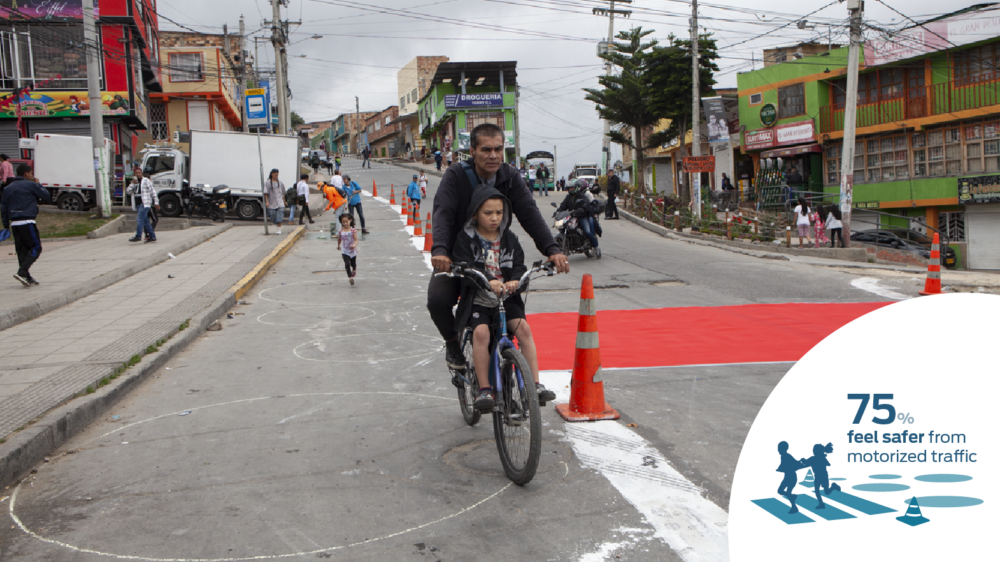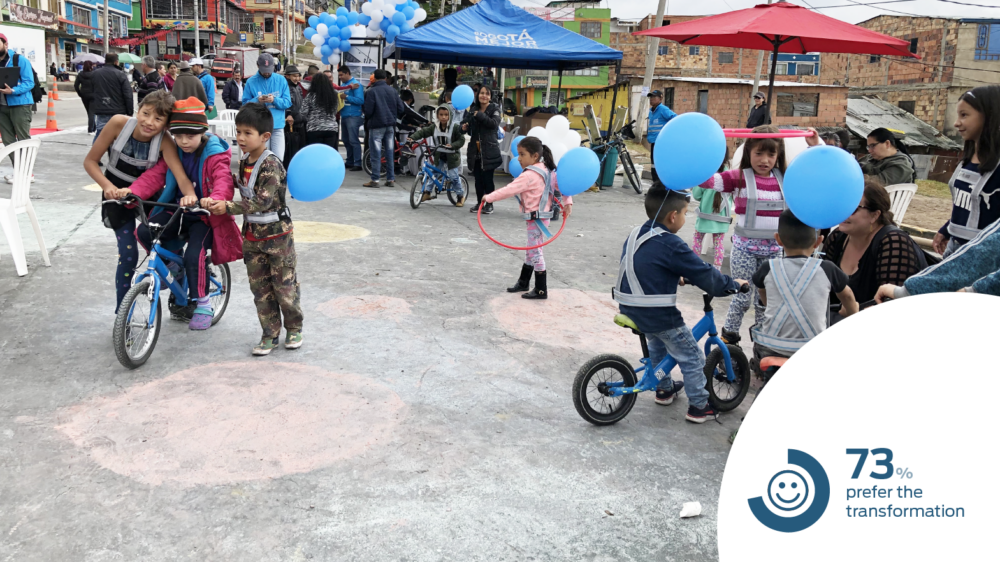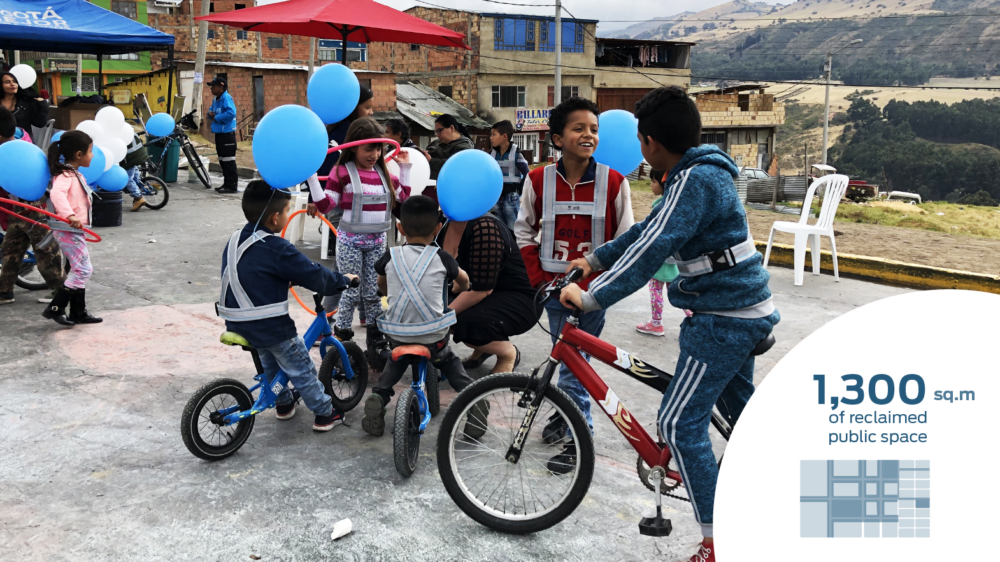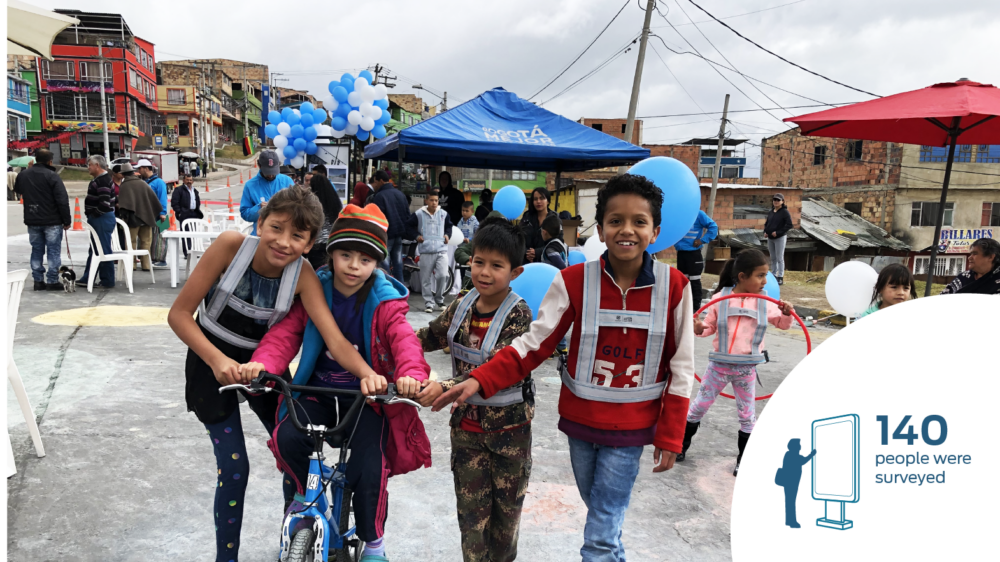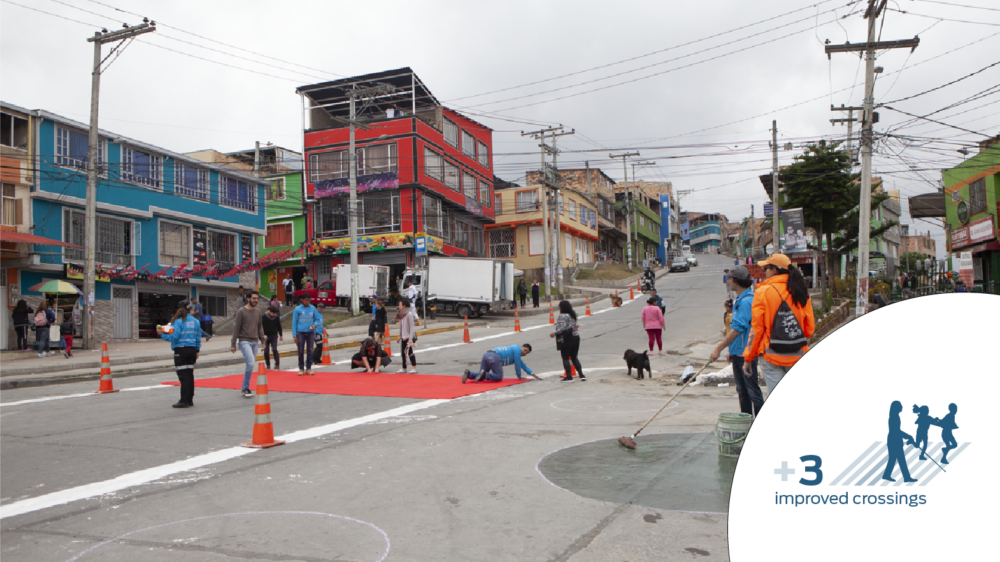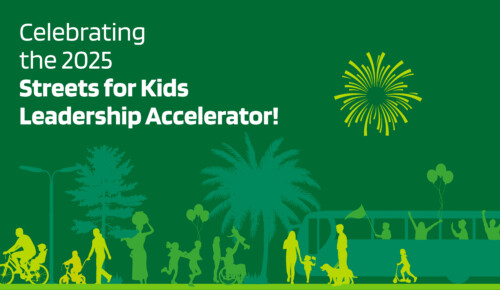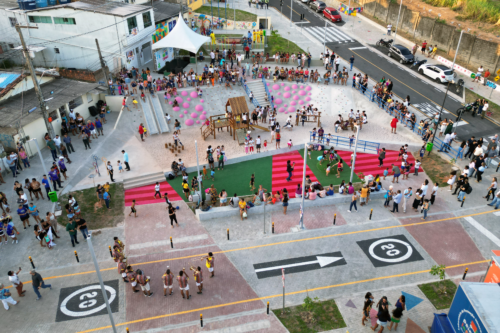By Lucia De La Mora Colunga
In early March, GDCI and the Mobility Department of Bogotá, Colombia, through the Bloomberg Initiative for Global Road Safety (BIGRS), implemented a pop-up plaza in the Antonio José de Sucre neighborhood of Usme district. An underutilized site zoned as public space, but mostly used as parking was cleared of parked cars to open the view to the mountains and provide the neighborhood with public space in a commercial street with high transit use.
Bogotá is the most populated Colombian city. It concentrates over 16% of the population and over 17% of the vehicles of the country. This translates into many lives to protect in heavily congested streets, and a contested public realm where the most vulnerable users rely on good street design for safety.
Local administrations have understood what is at stake and for years now have been raising the bar worldwide by developing and implementing innovative transportation policies to protect pedestrians, cyclists, and transit users. From 2000 to 2017, Bogotá’s road traffic fatality rate decreased from 16.1 deaths per 100,000 people to 6.8 deaths.
These innovations are based in reclaiming streets to provide space for efficient and affordable transportation modes, such as walking, biking, and bus service, for a more equitable use of public space. Bogotá designed a number of programs to reach this goal: Plazoleta Program, Zonas Visión Cero, Barrios Vitales (Lively Neighborhoods), and Corredores 50 km/h, among others. Their implementation have the common objective of reducing vehicular speeds and protecting the most vulnerable street users.
One of these examples in Bogotá’s busy implementation agenda happened in early March, in the Antonio José de Sucre neighborhood. NACTO-GDCI and the Mobility Department of Bogotá implemented a pop-up plazoleta that turned over 1,300 square meters of space used for parking into a public plaza to gather, play, and bike. For a day, the area was cleared of cars; the opened space recovered the view of the mountains, an iconic feature of Bogotá, and received the children and their parents, transit users, and the community in general. The space became a playful area, where kids and families had fun and a safe space to learn to ride a bike.
